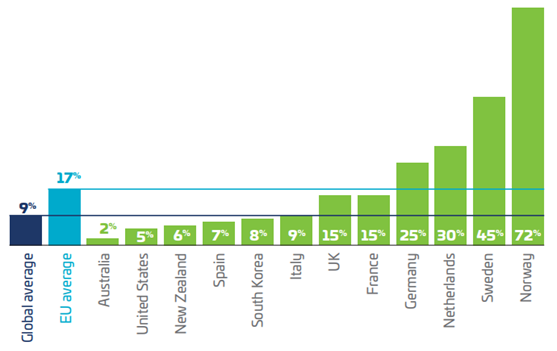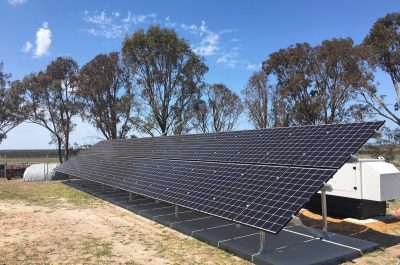Surfing the EV wave
Electric Vehicles (EVs) are back on the agenda following the federal election. Recently announced plans to introduce policy support for EVs will likely lead to a new wave of EV sales. It is critical this wave of EVs are well integrated with and create value, not headaches, for the wider energy grid. We can either surf the wave of new EVs or get dumped on the beach. It is critical to make the right technical decisions in the near term and allow trials and evidence to guide future decisions around tariffs and smart charging arrangements.
Checking the weather report
You can’t surf if there are no waves.
The EV sector in Australia is somewhere between embryonic and nascent. The EV Council’s 2022 State of EVs report shows a threefold increase in EV sales between 2020 and 2021, up to two per cent of sales.[1] This increase has occurred in the face of well documented supply chain challenges, particularly for right hand drive EVs, limiting the volume of sales.
Figure 1 – global EV sales
A major factor influencing the uptake of EVs globally is the strength of policy support. At the recent EV Summit in Canberra, Climate and Energy Minister Chris Bowen announced plans to release an EV strategy discussion paper. Among other things, the paper will explore EV infrastructure, incentives, and options to introduce vehicle fuel efficiency standards.
The new focus on EV policy in Australia will likely increase EV sales significantly, even if it doesn’t immediately produce the stunning outcomes in northern Europe. Some factors naturally hold back the uptake of EVs in Australia, such as the tyranny of distance heightening range anxiety. However, many of us also stay and play in our urban coastal areas or own a second vehicle that rarely travels far.
Waxing the board
Once you know the wave is coming, it’s time to prepare. Even an old-timer hanging ten on a malibu needs to keep the board waxed and the wettie warm.
For the coming wave of EVs it is important for infrastructure and standards to be capable of meeting future needs. This includes:
- Ensuring EV supply equipment is capable of being managed remotely. These ‘smart’ functions allow control to support the grid when the system is under stress. This could be reducing load during peak events or ‘soaking up’ excess solar energy when needed.
- Keeping the technical standards to deliver these capabilities open, nationally coordinated and consistent across jurisdictions. This is to ensure there are low barriers to providing services facilitated by controllability.
- Visibility of EVs for networks to ensure the continued safe, efficient and reliable operation of the network and wider power system.
Dropping in
Each wave is different. It’s only with quite a bit of practice that you can consistently bring together the variables of timing and momentum to gracefully drop in and scythe across the waves building behind you.
The same logic applies for our power system. Our power system is not a single homogeneous machine. Accordingly, a one size fits all approach will not achieve the best outcomes for the grid and its customers. Trials will provide important learnings, and flexibility in approaches will be the key to providing tailored solutions that meet customer needs.
Networks are trialling a range of tools to that will help deliver good outcomes for consumers as the EV wave approaches. This includes research and trials testing innovative tariff models and EV charging control measures. For example:
- ENA collaborative research on EV Integration
- Ausgrid’s JOLT EV Charging trial
- Endeavour Energy’s smart charger initiative
- EvoEnergy/ActewAGL’s vehicle to grid trial
- United Energy’s EV patterns trial
Cost-reflective tariffs continue to be the most efficient mechanism to signal the value of customer behaviour. Procuring network services from EVs should be an option for consideration if demonstrated to be efficient, not an obligation in managing the network.
Ultimately, network businesses are best placed to assess the needs of their system and to collaborate with their customers in setting their business plans to efficiently integrate and use the services that EVs can provide. This process can occur most effectively if technology and standards allow national consistency and interoperability, reducing barriers to the provision of services that will be increasingly valuable as the power system transforms.
[1] Electric Vehicle Council, State of Electric Vehicles, March 2022.


